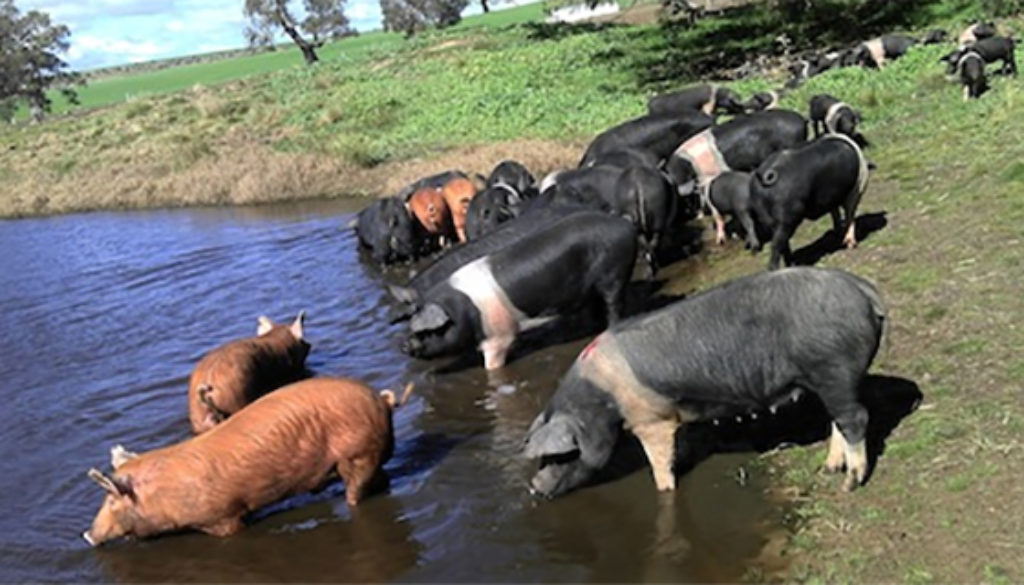Potentially Lethal Emissions Go Unreported on Factory Farms
By Jonathan Smith, Earthjustice
In many rural communities across the country, longtime residents have suddenly found themselves surrounded by industrial livestock facilities. In these facilities, hundreds of cows, thousands of pigs or tens of thousands of chickens are kept in confined spaces to be fattened up as quickly as possible. Most meat in America comes from factory farms like these. Every day, families living near these facilities are exposed to toxic ammonia and hydrogen sulfide from the manure created and stored at these confined animal feeding operations. People experience nausea, headaches, increased rates of asthma and chronic lung disease due to air pollution from livestock factories.
This pollution isn’t reported to the public or to local authorities, thanks to an exemption granted by the outgoing Bush administration in 2008. Today, after years of procedural delays, I’m finally going to court on behalf of local communities to demand that the EPA take back this irrational exemption. While other industrial facilities are required by law to report their toxic releases, tens of thousands of livestock factories have essentially been given a free pass by the EPA. The exemption stymies local efforts to clean up pollution and puts the health of local people at risk. It’s also unlawful, as I will argue in court.
The manure produced by a medium-sized livestock factory is equivalent to that of a city of almost 70,000 people. But unlike cities, these factory farms don’t have sewage treatment systems. They often store manure in open pits and then pump it out and spray it onto surrounding fields—much more manure than would be needed to fertilize the fields. Some livestock factories emit as much as 2,000 pounds of toxic ammonia a day from manure, as well hydrogen sulfide and other pollution.
People who live nearby suffer from constant exposure to foul odors, as well as the toxic effects of ammonia and hydrogen sulfide. At low levels, ammonia and hydrogen sulfide can irritate the eyes, nose and throat. Prolonged exposure to ammonia can burn lung tissue, and the long-term effects of hydrogen sulfide exposure include memory loss, poor motor function and decreased attention span. Toxic emissions from manure can even be fatal. On two separate occasions in 2015, father and son hog producers in the Midwest were overcome by fumes from a manure pit and died.
Livestock facilities produce more ammonia than any other industry. In fact, by the EPA’s own estimate, 73 percent of U.S. ammonia emissions come from livestock facilities. Why would the EPA allow these emissions to go unreported? Without basic information about emissions, communities across the country cannot take steps to protect their health, such as avoiding polluting facilities or working at the local level to clean up the dirtiest facilities. Without this information, the government won’t be able to determine what steps may be necessary to fix the problem, such as monitoring and clean-up efforts or new permitting requirements for facilities to reduce pollution.
Iowa native Jason Chance and several other rural residents submitted sworn statements to the court last year recounting how the arrival of large hog factories forced them to completely alter their lifestyles. The Chance family lived within two miles of 19,000 hogs and the open pits that held their manure. Chance, his wife and his daughter experienced nausea, diarrhea and respiratory problems; eye, nose and throat irritation; and severe headaches because of the noxious gases from the hog factories. They gave up taking long walks on their property and had to wear respiratory masks to do yard work.
“I believe that my family, my community and I have the right to know about the hazardous air pollutants to which they are being exposed,” Chance told the court. He also believes hog operations would be more likely to take steps to reduce or eliminate their emissions if the pollution had to be publicly reported.
State and local emergency response agencies have also spoken out against the reporting exemption. Tim Gablehouse, spokesperson for a national association that includes 4,500 emergency planning and preparedness agencies, writes in a personal blog post that toxic emissions reports provide critical information that helps responders do their jobs in case of an emergency at or near a factory farm. Without this information, public safety and even the lives of emergency responders are at risk.
Ever since the exemption was granted in 2008, Earthjustice has been fighting to roll it back and protect people’s right to know about potential health hazards in their neighborhoods. The EPA has been dragging its feet on this issue, perhaps hoping it will just go away—but we are not backing down.
In court, the agency will have a hard time explaining its unlawful, arbitrary decision to allow the livestock industry to keep the public—and those charged with protecting public health—in the dark about hazardous emissions. Eliminating the exemption for livestock factories will be a promising step forward for public health and quality of life in rural America.

